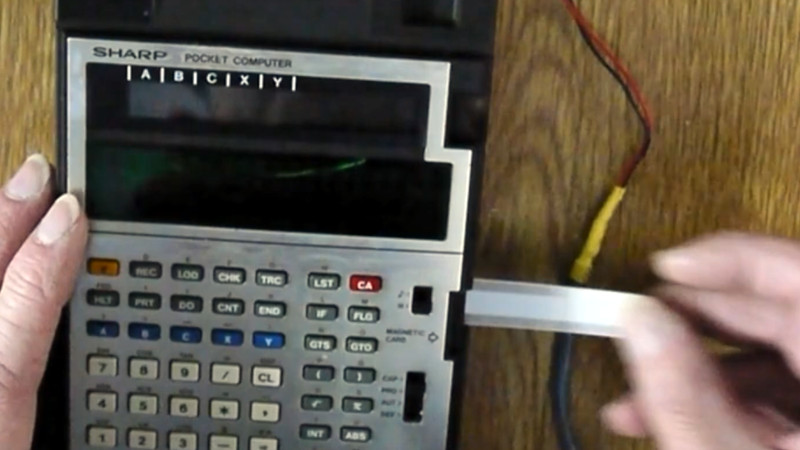We’re now all used to near-limitless storage on flash and other semiconductor technologies, but there was a time when persistent storage was considerably less easy to achieve. A 1970s programmable calculator from Sharp approached the problem with magnetic strips on special cards, and since [Menadue] has one with no cards, he set about making his own.
These cards are a little different to the credit-card-style cards we might expect, instead they’re a narrow strip with a magnetic stripe down their centre. The unusual feature can be found at the edge, where a row of perforations provide the equivalent of a clock line.
The newly manufactured cards have the clock slots machined along their edges, and then the magnetic part formed from self-adhesive magnetic strip. This last thing is a product we were not aware existed, and can think of plenty of possible applications.
The result as you can see in the video below the break are some cards with variable reliability. There’s a suggestion that white cards might work less well with the infrared light used in the clock detector, also a suspicion the low batteries make reading less easy, but still he’s able to retrieve a stored program. An extinct medium is revived.
Longtime readers will know we’ve spent time in calculator country before.
















I once had an old HP desktop calculator with a CRT display that used magnetic cards for storing programs.
I lived in Tokyo in the late 80s. They used magnetic cards for pay phones and for the subway system. There was a magazine called RadioLife, that my coworkers said was published by some Yakuza, that showed in great detail how to duplicate both phone cards and subway passes. Apparently there was no security involved in the coding, and the reader read from the card over a narrow strip of the magnetic stirp but wrote over a wide area. The hack involved cutting some tape from a metal cassette, taping it down on either side of the magnetic strip on the card to be copied, then inserting the card into a pay phone or one of the machines that read the subway cards. It would read the original strip, deduct the amount paid for the destination entered (or based on the country you were calling on the phone) then it would write the remaining value to the card, hitting the strip on the card itself and both pieces of cassette tape on either side. Then you would remove the cassette tape strips and tape them to the center of either a used-up card or a piece of plastic carefully cut to match the size of a legit card.
I remember seeing guys stepping off trains in stations, selling a few cards very quickly, then stepping back onto the train before the police could show up. Later there was an interesting court case reported in the newspaper. The court ruled that it was not illegal to make the duplicate cards, not illegal to possess or even sell the duplicate cards, but only illegal to use them. After that, the guys who sold them could be seen standing in front of police boxes, selling stacks of cards to anyone who wanted them. Needless to say, shortly after that they started changing out all the subway ticket machines and the pay phones so this sort of thing would no longer work.
I remember a card-based audio recorder from the 70s. The cart was wider than a typical index card and had a single magnetic stripe on bottom. You’d feed the card at one side, then record audio, about a few seconds worth. After that it can be played back or re-recorded. The cards were all blank to write in notes or glue on picture. ie “Lion” with the picture of lions to teach young people.
do you mean something like the Califone Cardmaster?
Techmoand did a video about it, see link: https://www.youtube.com/watch?v=0b2RYRggV8I
Yep that one!
Long time ago I worked at a university where the cafeteria decided to sell prepaid magnetic cards to pay for the food. One week later there was a schematic in the student magazine to make perfect copies of the cards with cassette recorder heads and a slide for two cards. No need to reverse the code just copy a 100,- card. Many years later government decided to test the new public transportation card at the same university.
And I still enjoy my HP-41 with cardreader.
At my university of likely similar vintage, similar cards were for photocopying, and similar means were used to copy “full” cards.
As a starving grad student, I would have very much preferred if they were cafeteria food cards.
And I, too, still have and use my 1981 HP-41C with card reader.
Yep. Did the same thing with my college’s parking system cards back in the day.
We made custom mag cards in college from old casette tape and glue… Best to use an 8 track or reel to reel tape as it’s wider and you don’t have to lay multiple strips. Or probably a VHS tape – but we didn’t have those to go chopping up.